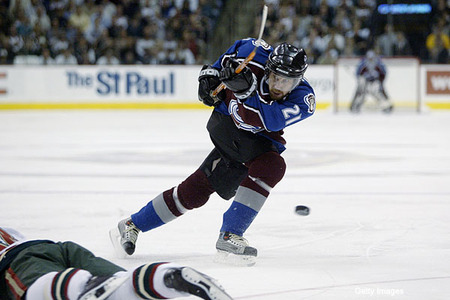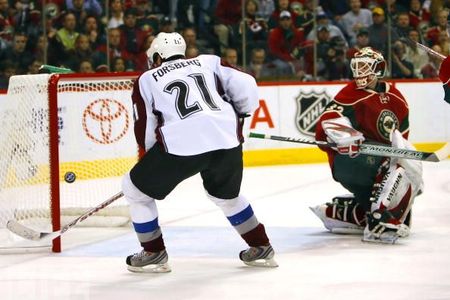 |
| Photo courtesy of Getty Images |
Peter Forsberg lit the hockey world on fire from the moment he first played with Modo in his hometown in
Coming off what most describe as the best season in his career, Forsberg entered the Avalanche's 2003-2004 campaign with confidence. However, an ankle injury he sustained during 2002 continued to cause him difficulty. He was also beginning to have significant issues with his feet. On October 28th in a game against the Calgary Flames, he severely pulled his groin muscle, most likely as a result of overcompensating for his skating troubles. Although he was out of the line up for less than 10 days initially, the groin issue lingered for much longer, causing him to miss more games. Then, on February 16, 2004, he suffered a hip injury that kept him out for the next six weeks. All told, Foppa only played in 39 regular season games. As he'd done many times in the past, though, he managed to score at a 1.4 point-per-game pace, recording 55 points. He also had a strong presence in the playoffs with 11 points in 11 games.


